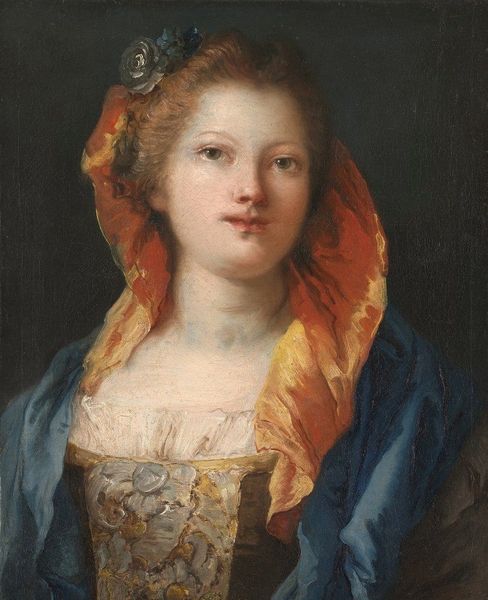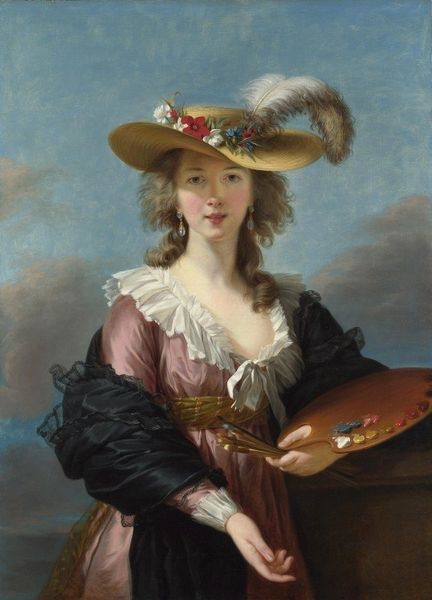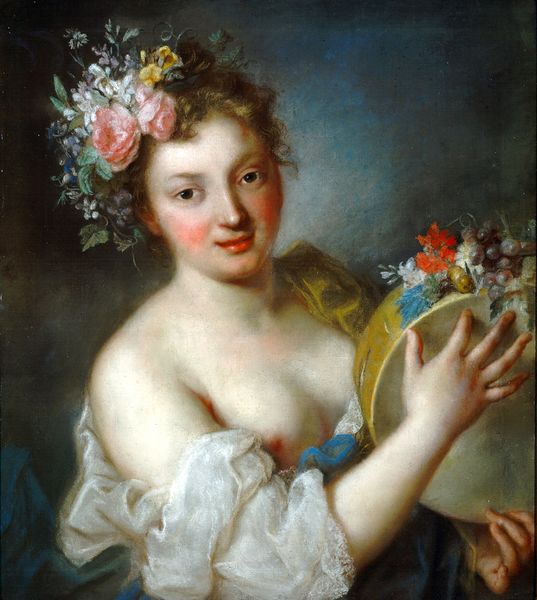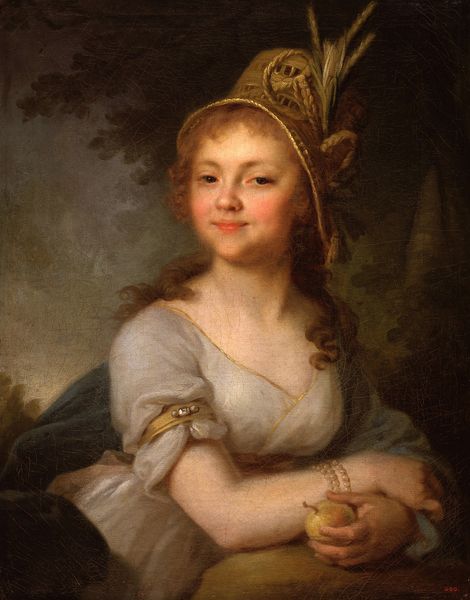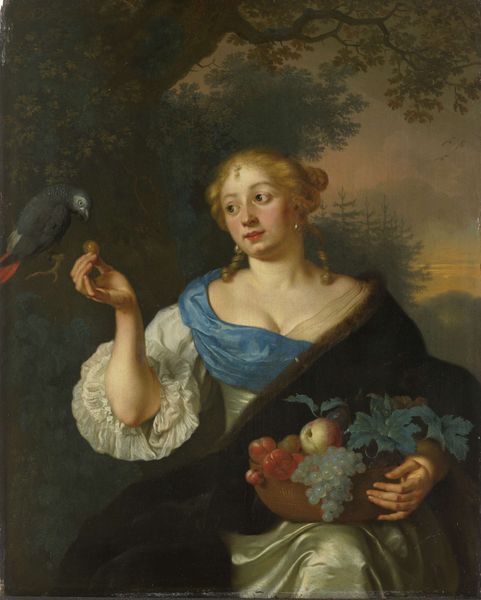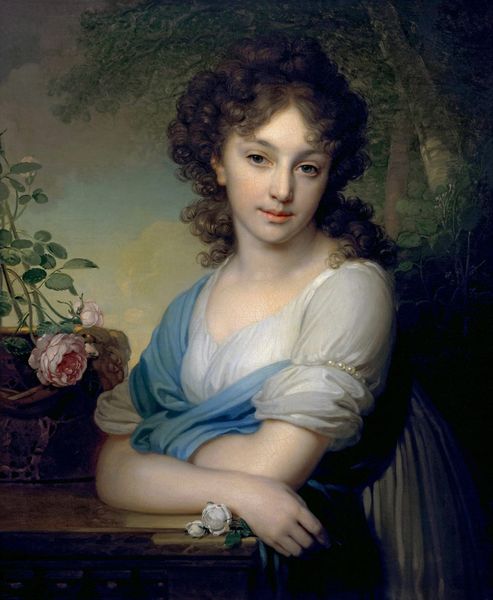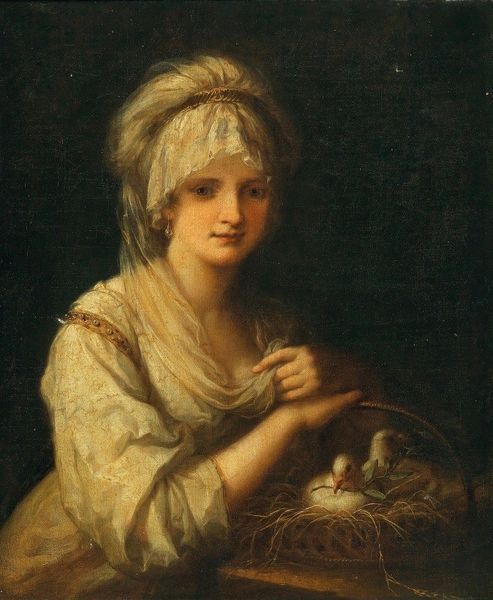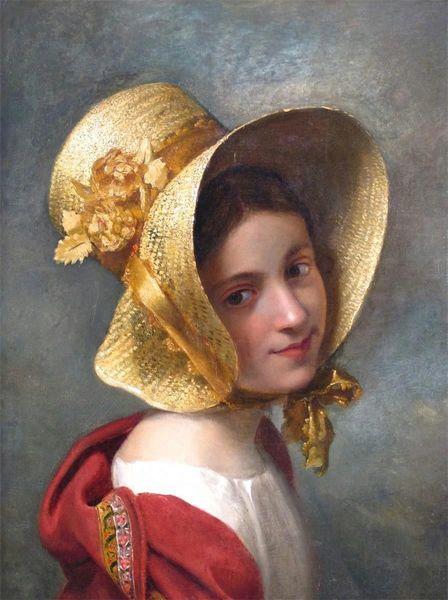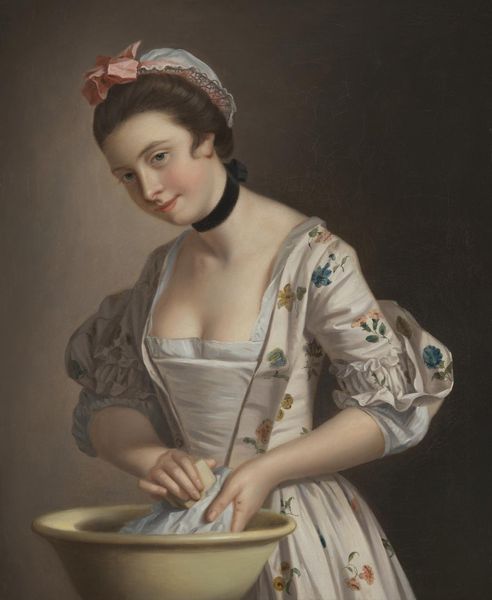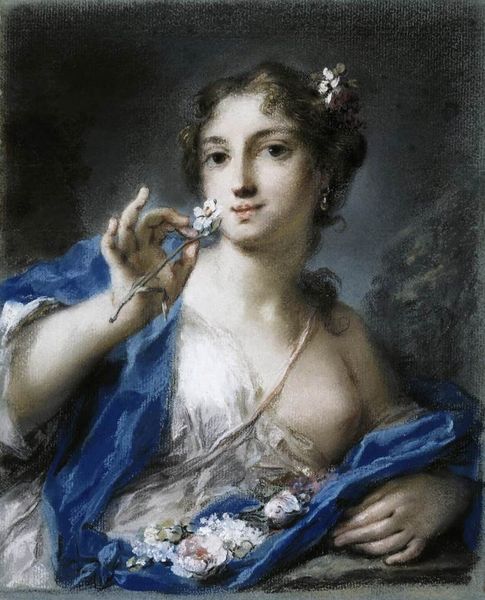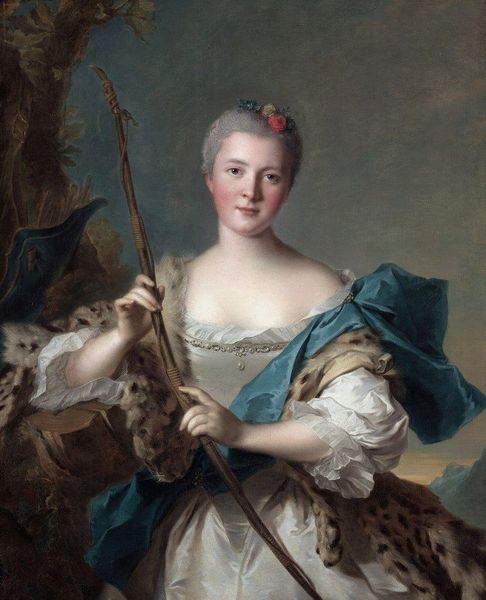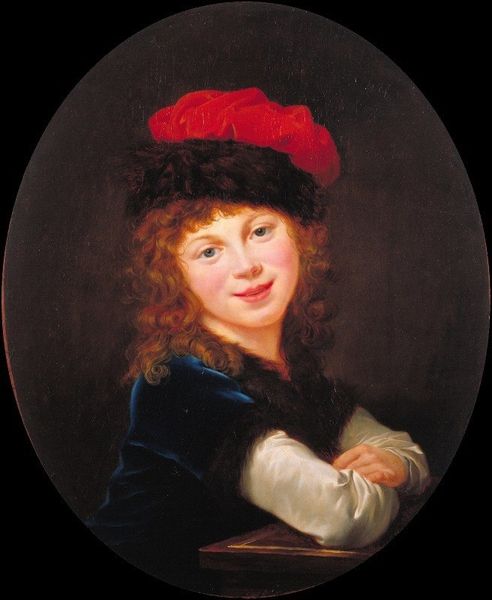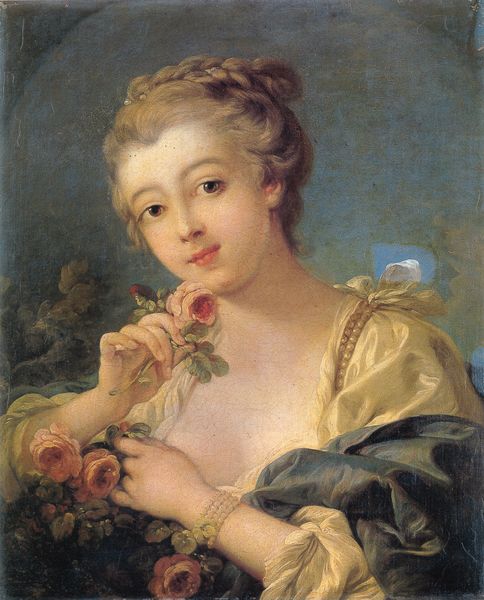
painting, oil-paint
#
portrait
#
figurative
#
baroque
#
painting
#
oil-paint
#
figuration
#
genre-painting
Copyright: Public Domain: Artvee
Editor: Here we have Gerard van Honthorst’s "Shepherdess With Pigeons," painted in 1652. It’s an oil painting, and I’m immediately struck by how bright and almost staged the scene feels, particularly her gaze and open smile. What do you see when you look at this work? Curator: From a formalist perspective, it is productive to look at the contrasts. The striking contrasts within the composition: the smooth skin against the rough straw of the nest, the stark color differences in her dress, create a visually stimulating experience. We must consider how the artist directs our eye. Editor: Could you expand on how the artist directs the eye? Curator: Consider the strategic placement of light. It illuminates her face and the pigeons, guiding our gaze. Notice the geometric structure created by the diagonals of the staff she holds versus the round hat. The eye oscillates between them. The narrative itself becomes secondary to this play of form and light. How does that structural understanding shift your own interpretation? Editor: I suppose it does steer me away from thinking so much about who she is and what she's doing, and more toward how the artist wants me to see. So you’re less concerned with the ‘shepherdess’ aspect, and more with the organization of forms within the canvas? Curator: Precisely. By analyzing these elements—line, color, light—we gain insight into the artist's intent and the intrinsic qualities of the artwork. The semiotics inherent within Baroque genre painting must be acknowledged to then be analyzed. Editor: That makes me appreciate how the artist’s choices about lighting and composition can be just as important as, if not more than, the subject matter itself. I’ll definitely be thinking about structure more when I look at paintings now!
Comments
No comments
Be the first to comment and join the conversation on the ultimate creative platform.
